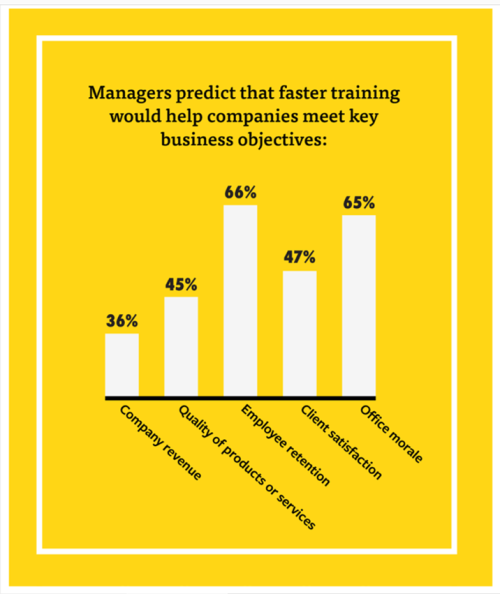 A recent Pew Research Center report examines the impact that technology has on workers and provides some counter-intuitive data. “Digital Life in 2025: Technology’s Impact on Workers” looks at a representative sample of adult Internet users and the role or impact of digital technology on their work lives. The report helps to identify the role of technology in different areas of business, what certain workers find most valuable, and provides surprising perspective on the discussion of whether technology is keeping employees productive, or spreading them too thin and negatively pressuring them to stay constantly connected or “plugged in.”
A recent Pew Research Center report examines the impact that technology has on workers and provides some counter-intuitive data. “Digital Life in 2025: Technology’s Impact on Workers” looks at a representative sample of adult Internet users and the role or impact of digital technology on their work lives. The report helps to identify the role of technology in different areas of business, what certain workers find most valuable, and provides surprising perspective on the discussion of whether technology is keeping employees productive, or spreading them too thin and negatively pressuring them to stay constantly connected or “plugged in.”
Among online workers, the Internet and email are deemed the most important information and communication tools, though it may be surprising that social media was ranked very low in importance. 61% of American workers who use the Internet stated that email is “very important” for doing their job, while 54% said the same about the Internet. Only 4% reported that social networking sites like Twitter, Facebook or LinkedIn were “very important” to their work.
It may also be surprising that for online workers, landlines outrank cell phones in use and importance. 35% of workers surveyed say landline phones are “very important” to their work, compared with 24% who say the same about cell phones. Internet and email are ranked as highly important for those that work in traditional “office jobs,” and ranked as critical for the 59% of employed adults who work outside of the office at least occasionally.
Many reviews of the impact of technology today argue that technology can distract as easily as it can be used as a productivity tool. However, Pew Research’s data found that only 7% of online adults feel that their productivity has dropped because of the Internet, email, and cell phones, and 46% report feeling more productive. 51% of Internet using workers cited that the Internet, email, and cell phones notably expand the number of people they communicate with outside their company. 39% of online workers say that the Internet, email, and cell phones allow them more flexibility, and 35% say it increases the number of hours they work.
 When it comes to the question of productivity, the vast majority (92%) of working adults say that the Internet has not hurt their productivity (including 46% of those who say it has not changed their productivity and 46% who say it has increased their productivity). Those in office jobs are twice as likely as those in non-office jobs to say that the Internet has increased their productivity.
When it comes to the question of productivity, the vast majority (92%) of working adults say that the Internet has not hurt their productivity (including 46% of those who say it has not changed their productivity and 46% who say it has increased their productivity). Those in office jobs are twice as likely as those in non-office jobs to say that the Internet has increased their productivity.
Many employers are being proactive regarding the perceived tendency for the Internet to “distract.” 46% of workers surveyed state that their employer blocks access to certain websites, and have rules about what employees can say or post online (a figure that has more than doubled since 2006). Despite this, 18% of working adults report being unaware if their employer blocks sites and 27% are not sure if their employer has rules about what they can say or post online about their workplace. On the flipside, 23% of working Internet users report that their workplace encourages them to promote it online, and 59% say this is not something their workplace encourages them to do. Overall, Pew Research’s data show that more and more employers are implementing policies – “social media policies” – covering what employees can or cannot say about their employers online.
While we seem to read daily about the threats of digital technology from hacking and spam, phishing scams and warnings about loss of productivity and work/life integration, this data indicate that email remains just as important and used by American workers as when it first became of workplace tool, and is likely to continue to be a vital tool across the workforce. Pew Research Center’s report highlights that employee productivity may not be as negatively impacted by distractions from the Internet as some managers assume, but rather points to some other potentially problematic areas that organizations should be conscious of as they continue to increase their use of technology. Specifically, these concerns include the difficulty from employees in being able to “unplug,” as workers report the Internet and email are reasons for an increase in the numbers of hours they work. Additionally, organizations should check in with employees about their social media/internet policies. If they have policies in place, are employees aware of them? If organizations don’t have policies in place, giving thought about how to provide guidance to employees may be warranted – especially for organizations that are heavily dependent on technology and the internet.
More than anything else, this report should cause us to consider whether, in fact, email is truly dead – as many Millennial watchers believe; whether everyone is dying to use their smartphones at work, and how big a productivity threat popular social media sites really are. Admittedly, this survey’s sample was not enormous, but a 95% confidence rate might provide motivation to take a closer look at the impact technology is having on the productivity, work/life integration and lives of our employees.





 A recent
A recent 





